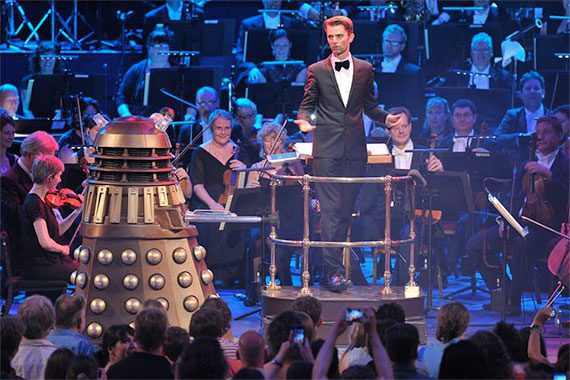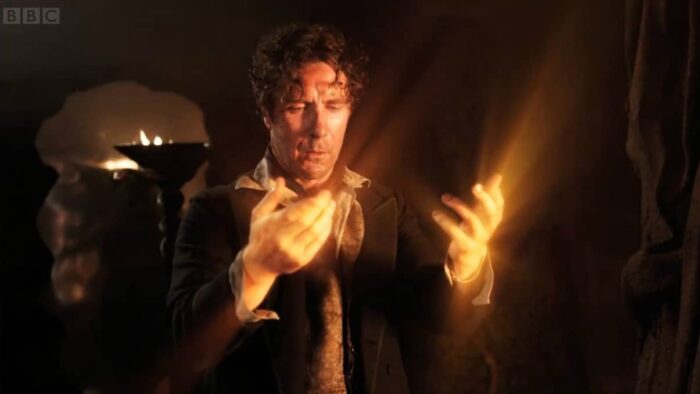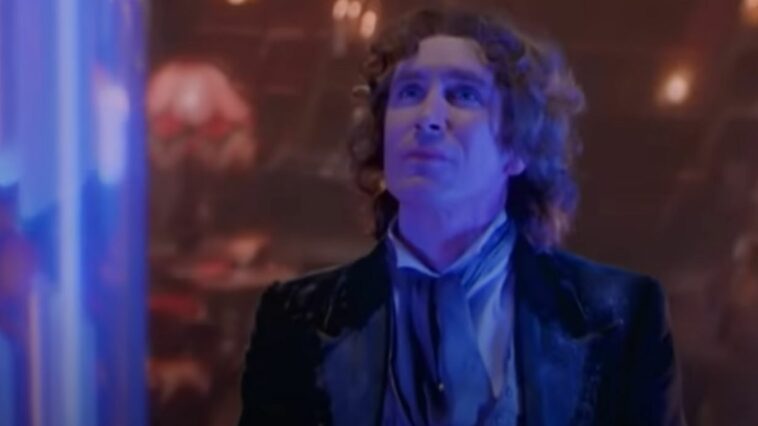Not every show is lucky enough to get two shots at a revival. Then again, not every show is Doctor Who. The beloved British science fiction programme, which premiered on November 23, 1963, ran for 695 episodes across 26 Series before its cancellation in 1989. The BBC will claim it was axed due to dwindling figures and issues behind the scenes whilst fans will tell you that Michael Grade (Head of BBC Programming at the time) had it out for the show. Grade himself has been open about how he felt the show had become too violent and that the sets looked too cheap but the truth lies somewhere in the middle. Ratings had dwindled and the higher-ups at the BBC were debating about the future of the show between themselves but Michael Grade was also laser-focused on bringing the Whonivers to its knees. Despite attempts to launch a new series in the USA with a backdoor pilot dubbed The TV Movie in 1996, it wouldn’t return to the small screen until 2005. It did so under the watchful eye of writer (and Who fan) Russell T. Davies who clearly took inspiration from The TV Movie…even if he’s never stated this to be the case.
Out With the Old
Doctor Who: The TV Movie saw a newly regenerated Eighth Doctor (Paul McGann) battling amnesia and old nemesis The Master (Eric Roberts) in New York on New Years Eve, 1999. Along for the ride is romantic interest Doctor Grace Holloway (Daphne Ashbrook) and streetwise teen Chang Lee (Yee Jee Tso). At five million dollars, it remains the highest budget Doctor Who story ever produced and it is noticable when compared to the series’ original run. The “cheaply-made” sets were replaced with on location shooting in the Big Apple, the most intricate TARDIS control room yet put to screen and Hollywood standard CGI. This change was also reflected in the score, composed by John Debney, which had a more orchestral sound than the BBC’s Radiophonic Workshop was capable of at the time. It gave the story a sense of scale that Studio B couldn’t provide.
The film failed to land with audiences, meaning that a McGann-led series never came to fruition. However Russell T. Davies’ vision for the show would bring with it some of that big-screen energy. The sets were larger, with less janky greenscreens and CGI to bulk out the show’s surroundings whilst the cinematography made use of the newer widescreen ratio and wide shots that fully demonstrated those surroundings. The score was larger too with composer Murray Gold providing music via the BBC National Orchestra of Wales and their composer Ben Foster, which delivered the energy and emotion that made that era so beloved.

Love and Monsters
The most controversial change made would be in the relationships between The Doctor and his companions, which until 1996 had been primarily platonic (barring the Fourth Doctor and Romana). Doctor Grace Holloway would provide a basis for the companions to follow. She was young, pretty and blonde, falling in love with The Doctor seemingly over the course of a few hours. This worked, to an extent, for the movie which was aiming to please an American market whose media usually features romance between the main leads. Whilst companions in the show tended to be on the younger side, there was still a decent mixture of male and female voices in the TARDIS, but the influence of Doctor Holloway paved the way for companions to seek deeper intimacy with the Time Lord.
Rose Tyler came the closest, even getting The Doctor to admit that he reciprocated her feelings, but her successor Martha Jones would have her affections go unrequited. Good old Donna Noble refused to entertain the notion of hanky-panky in the TARDIS (as the tabloids dubbed it) but Amy Pond made a couple of advancements despite her engagement to Rory Williams, including the night before their wedding. Clara Oswald could have had the most interesting of these relationships, falling in love with The Doctor while he looked young before he regenerated into an older-looking body. There were several companions who did not fit this mould either because they were gay (Bill Potts) or because they were the same gender (Mickey Smith) but there is a notable outlier in Captain Jack Harkness—the first openly bisexual character in the show. His kiss with the Ninth Doctor in the Series 1 finale was a landmark moment, airing before “the watershed” (9pm, where such acts were permitted) and being the very first male-on-male kiss that many young Who viewers had ever seen.
Says Who?
The major question fans had in 2005 was whether or not the TV Movie would be considered canon, given that it was a movie and that it had been produced in America. 2003 almost answered that question with animated story The Scream of the Shalka, featuring Richard E. Grant as the Ninth Doctor, but it led on from the original, unmade film script whose canon was also in question. Both those questions were answered when Christopher Eccleston was announced as the Ninth Doctor in 2004. In one of his first appearances he references being half-human on his mother’s side, which was a piece of controversial lore introduced in the TV Movie. However the first official, in-universe, canon confirmation that McGann’s Doctor was Number Eight wouldn’t occur until Series 3 where his face is sketched alongside other incarnations in the Journal of Impossible Things. The man himself would return in 2013 during a prequel minisode for the 50th anniversary special, where he referenced Doctor Holloway, finally putting to an end any doubt as to the movie’s canonicity…17 years after it aired. This matters because they could have chosen to ignore it. Eccleston could have been the Eighth Doctor and the TV Movie could have been ignored but showrunner Russell T. Davies and the BBC decided to keep it.

Just Like Old Times
Doctor Who has been less cinematic of late. When RTD left in 2010, writer Stephen Moffat took over showrunning duties. His vision included continued romances but more complex and ambitious stories as opposed to character-driven ones. He maintained Murray Gold, Ben Foster and the BBC Orchestra of Wales, however they would leave with Moffat in 2017. At this point, there was a major changing of the guard with Chris Chibnall coming in as showrunner and Segun Akinola entering as composer. Since then, the score has felt more current, with more of a bass sound and the show itself hasn’t looked as cinematic. A lot of the shots are flat and the lighting tends to be studio-esque which means that the show looks and sounds like any other drama on TV. This era has not gone down well with many. However, there is light at the end of the time vortex. On September 24, 2021 it was announced that Russell T. Davies would be returning as showrunner for the 60th anniversary, Series 14 and beyond. This time he brings with him the backing of his own production company, Bad Wolf Productions, which would later be acquired majoritively by Sony. Hopefully, he brings that big screen energy with him, but if he needs inspiration, there’s at least one film he should revisit.
Doctor Who Am I, a documentary about the TV Movie, hits cinemas later this month, whilst Jodie Whittaker’s final episode “The Power of the Doctor” airs on October 23, 2022 on BBC One.

